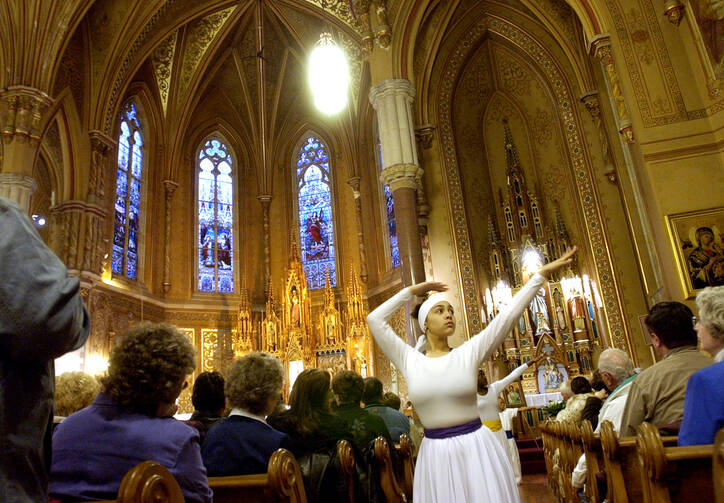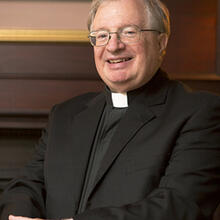The summer I was ordained I spent a month as a substitute pastor in Kotzebue, an Eskimo village in the Alaskan Arctic. One of the courtesies I received from the villagers was a fifty cent admission for me and my guests to the folk dances they did for visiting tourists. In return, I was prompted to be one of the first of the onlookers to rise at the end of the performance to dance with local dancers.
Now, to my untutored eye, the native dances seemed rather simple. There was even a dance performed by women, seated astride a bench, paddling, in commemoration of the early Eskimo migration to Alaska. How much simpler could it get.
On my last day, at the end of the dance, one of the elders called me aside. She first complimented me. “Father,” she said, “it’s good of you to dance with us.” Then, the killer comment: “Your heart is in it, but not your feet.” She was right. So, I blushed and laughed. Fortunately, my guests, young officers from the nearby early warning radar station, from the now-abandoned DEW line, had a lot more rhythm, and their dancing encouraged tourists to join in.
I tell the story to make clear that, although I enjoy viewing ballet and modern dance, I am not prepared to be a dance reviewer. But after a Holy Week evening prayer at Saint Ignatius of Loyola Parish in Chestnut Hill (MA), I want to praise dance as a form of prayer.
The program, performed by the Dance Ministry of St. Ignatius Church, consisted of prayers, hymns and dances with live musical accompaniment. There was even an imaginative playlet of Joanna, the daughter, of Jairus, comforting Peter after his denial, urging him to accept God’s love and to return to the disciples in the Upper Room.
After the first three numbers I thought of St. Augustine’s famous line, “He who sings, prays twice (Qui cantat, bis orat), and mused, “One who dances, prays three times.” Though I was only a pew-sitter, the dancing did stimulate livelier prayer in me.
The highlight in dance, musicality and prayerfulness was a solo, “Peter’s Tears,” danced by Steven Cornwall, a young Jamaican. The plaintive strains of the violin, expertly played by Adam Vaubel, was entitled “Kol Nidrei,” an ancient Aramaic song often song on the eve of Yom Kippur. It was the perfect lamentation to accompany the dance solo.
Towards the end, a dance performed to David Haas’s “You are mine” drew the congregation in to pray in song.
Do not be afraid. I am with you.
I have called you each by name.
Come and follow me;
I will give you rest.
I love you, and you are mine.
As if to acknowledge the prayerful mood, the congregation sang softly.
At the very end, Fr. Robert VerEecke, S.J., the company’s longtime leader led the church in singing and dancing The Breastplate of Saint Patrick.
Christ before me,
Christ behind me,
Christ within me . . .
I sang and I danced the blessing. And my arms, I must confess, were no better coordinated than my feet had been in Kotzebue. But I left in peace with my spirit lifted in prayer.








